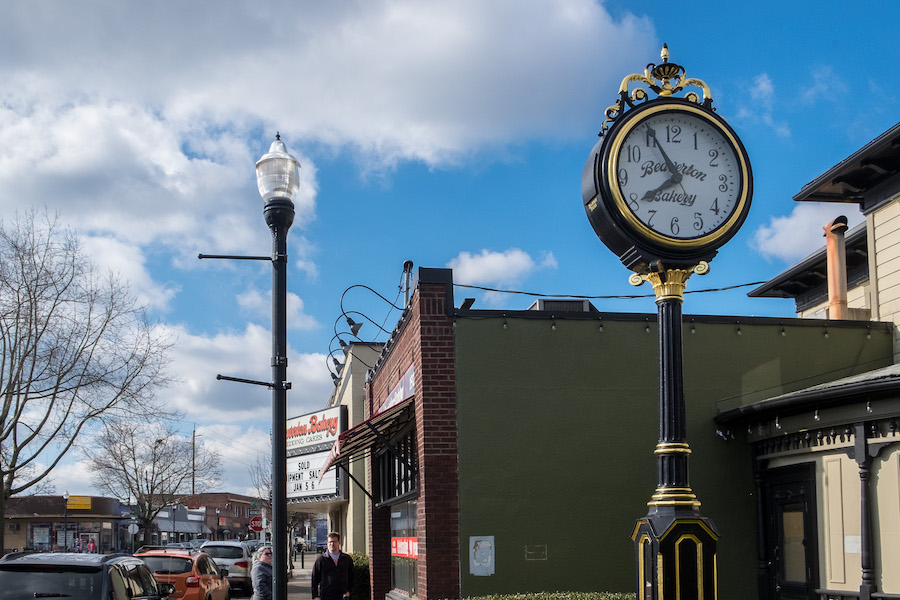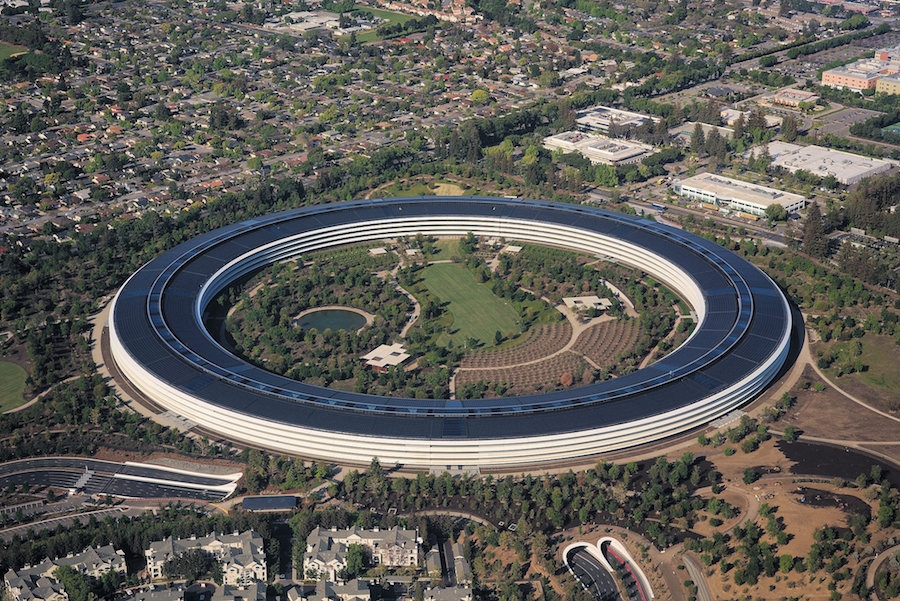Real estate trends change the tech landscape.
Portlanders are still rejoicing over a new Intel chip factory which the company promises will bring 1,750 high-tech manufacturing jobs to Hillsboro. The project will likely run into the hundreds of millions of dollars, making it one of the largest capital projects in Oregon history.
The opportunity also presents a challenge for Portland’s tech community. The two subsectors of the local tech industry, hardware and software, have been growing apart. Hardware development continues to cluster in the suburbs, while software operations have moved downtown. The development pattern has created a dilemma.
“It’s almost this weird donut. Around there’s hardware, and inside there’s software,” says Rick Turoczy, co-founder of PIE (Portland Incubator Experiment), a hub for growing tech startups. “That’s a challenge because where we see the industry going is having both those capabilities.”
The future of technology marries the two specializations. Right now, the bifurcated industry is unprepared to capitalize on the internet of things, autonomous vehicles and other hybrid technologies. Turoczy sees a need for more events to bring the two sectors into a dialogue.
“It’s not rocket science. A lot of it is being present and showing up in the community they’re interested in,” he says. “One of the challenges with corporations is they’re very proud of their brand and recognize the benefits of that association, and that causes them to think people will come to us.”
The other problem relates to hiring. When the Intel factory goes up, those 1,750 jobs in suburban Hillsboro might take time to fill. The tech workforce depends largely on millennials, who prefer urban living. They tend to seek walkable neighborhoods, home grocery delivery and e-scooters more than white picket fences and two-car garages.
“It’s almost this weird donut. Around there’s hardware, and inside there’s software”
—Rick Turoczy, co-founder of PIE
For the suburbs to attract a younger workforce, they need to emulate urban centers. Beaverton launched a successful food cart pod, the BG Cartel, last year. ReachNow, BMW’s car-sharing service, placed vehicles on the Intel campus. But the question remains whether adding amenities will be enough to overcome decades of sprawling, car-centric development.
“Maybe there’s some amenities you could offer, but you’re sacrificing a lot of the things people like about urban lifestyles,” says Chris Bright, vice president of marketing and co-founder of legal software provider Zapproved. “I think that’s something that will continue to be a challenge.”
One solution, Bright posits, could be to offer wi-fi connected shuttles from downtown to suburban tech outposts, similar to the Google and Facebook services in Silicon Valley. Better transportation options would allow millennials to live in urban neighborhoods and still work for hardware companies.
“I wouldn’t say there’s going to be mad rush out to Beaverton. But I promise you in five years time that’s going to look like a better option for a lot of workers.”
—Chris Bright, Zapproved
That would be an interesting reversal of the historical flow of traffic. In the 1990s, household-name suburban giants like Intel, Mentor Graphics and Digimarc anchored Portland’s growing tech scene. Most companies sold microchips and semiconductors. Computers were larger back then and workers accepted office parks. The abundance of land in Beaverton and Hillsboro perfectly suited hardware companies’ needs.
In the 2000s, everything changed. The rise of cloud computing, object-oriented programming, and an economic development push by the Portland Development Commission and Mayor Sam Adams favored software over hardware. Tech companies needed less space and fewer people. The industry packed bags for downtown. By 2008, suburban tech outposts went hungry for talent.
In the midst of this climate, in former Intel employee Monica Enand’s garage in Beaverton, she and Bright launched Zapproved. It went well at first, but soon they had a people problem. “Downtown had gotten cool,” Bright says. “It became a real impediment. Our application flow was light. People would talk to us and say they had better options.”
 Downtown Beaverton is adapting to appeal to younger workers and their families. Photo: Jason E. Kaplan
Downtown Beaverton is adapting to appeal to younger workers and their families. Photo: Jason E. Kaplan
Zapproved moved to Portland’s Pearl District, and lately they’ve seen plenty of company. Portland’s iconic office building, Big Pink, filled with tech startups like New Relic, Webtrends, SurveyMonkey and iovation.The PIE Incubator, the Innovation Quadrant and nearly every other tech-focused economic development project launched downtown.
Along with startups, regional outposts of big-name software companies are colonizing downtown real estate. The Portland offices of Google and Mozilla are growing. Autodesk is settling into its new Central Eastside headquarters after abandoning Lake Oswego. These companies can outsource their storage to server farms feeding off cheap hydropower in the Oregon desert, while their nimble development teams work downtown or even from home.
With Lattice Semiconductor retreating from Big Pink back to Hillsboro, and Intel shoring up its suburban factory complex, it would appear that the hardware and software sides of tech are continuing to grow separately.
But affordability concerns and congestion could force the pendulum back to the ‘90s. If the suburbs succeed at marketing their new amenities and increasing density, they could attract software startups frustrated with rising rents and congestion in the city center. Already downtown and Pearl district office rents have risen to a price that only growth-stage companies, not startups, can afford.
“I think it’s a really good question,” Turoczy says. “At some point does the Pearl become so cost prohibitive that the only alternative is to go to Beaverton?”
Bright thinks yes, but it will take time. The success of DiscoverOrg and other tech companies in Vancouver suggests development pressures in downtown Portland are influencing the market. “I wouldn’t say there’s going to be mad rush out to Beaverton,” he says. “But I promise you in five years time that’s going to look like a better option for a lot of workers.”
To subscribe to Oregon Business, click here.





